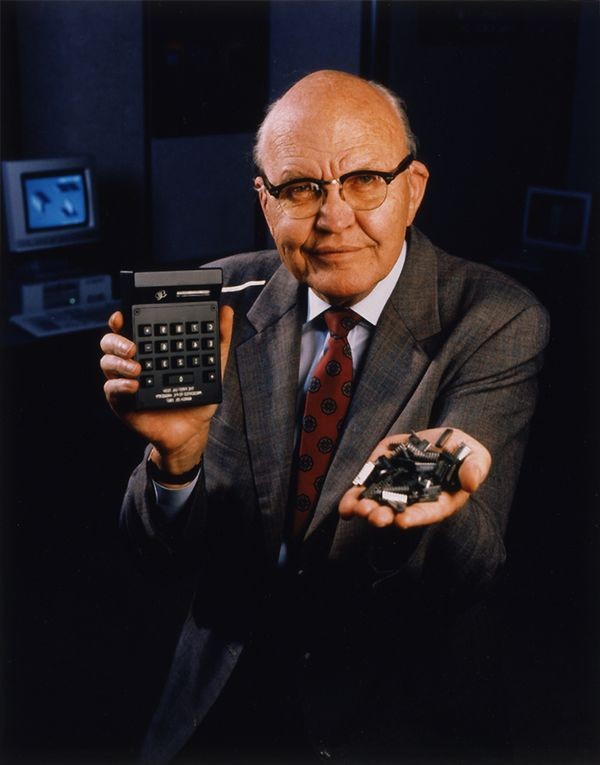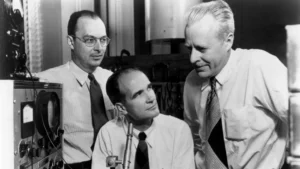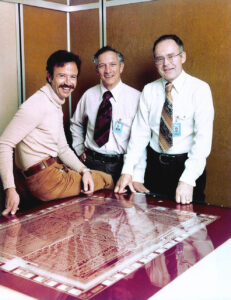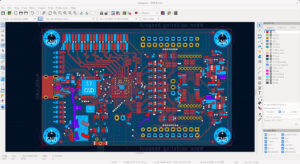Introduction
In the vast landscape of technology and innovation, few names shine as brightly as Texas Instruments Incorporated (TI). Headquartered in Dallas, Texas, this American technology company has left an indelible mark on the semiconductor industry and beyond.
With a history dating back to the mid-20th century, TI has consistently pushed the boundaries of what’s possible, from pioneering the integrated circuit to revolutionizing the calculator and digital display technologies.
Texas Instruments redefines America
Texas Instruments came into existence in 1951 through the restructuring of Geophysical Service Incorporated, a company founded in 1930. This company had been engaged in manufacturing equipment for the seismic industry and defense electronics.
In the beginning of 1952, Texas Instruments acquired a patent license for $25,000 from Western Electric, an AT&T manufacturing subsidiary, to manufacture germanium transistors. Production commenced later that year.
Under Haggerty’s leadership, Gordon Teal was recruited for his semiconductor crystal growth expertise, and he was initially tasked with overseeing TI’s research lab. By the close of 1952, Texas Instruments revealed growth to 2,000 employees and $17 million in sales.
A pivotal moment arrived in 1954 when TI successfully developed the world’s first commercially viable silicon transistor. In the same year, they achieved another milestone by creating the inaugural transistor radio.
The breakthroughs continued as Jack Kilby, stationed at TI’s Central Research Labs, unveiled the integrated circuit in 1958.
Specific achievements of Texas Instruments
The invention of the integrated circuit (IC). In 1958, Jack Kilby, a TI engineer, invented the IC, which is a miniature chip that can contain multiple transistors.
The IC is the foundation of modern electronics, and it has revolutionized many industries, including computing, telecommunications, and medical devices.
It is helped to accelerate the development of the Cold War military-industrial complex. The IC was essential for the development of new weapons systems, such as the Intercontinental Ballistic Missile (ICBM).
This gave the United States a strategic advantage over the Soviet Union during the Cold War.
The development of the handheld calculator.
In 1967, TI introduced the first handheld calculator, the SR-50.
This product made it possible for people to perform complex calculations quickly and easily, and it had a major impact on education and business.
The calculator made it possible for students to perform complex calculations without having to learn complex mathematical formulas. This helped to level the playing field for students from all backgrounds.
The introduction of the single-chip microcontroller. In 1970, TI introduced the first single-chip microcontroller, the TMS 1000.
This product combined all the elements of a computer onto a single chip, making it possible to create small, affordable electronic devices.
The single-chip microcontroller helped to revolutionize the manufacturing industry. The microcontroller made it possible to automate many manufacturing processes, which led to increased productivity and efficiency.
This helped to boost the American economy and create jobs.
Read More:Follow us on Linkedin for everything around Semiconductors & AI
The development of the digital light processing (DLP) chip.
In 1987, TI invented the DLP chip, which is a micromirror array that can be used to project images.
The DLP chip is used in a wide variety of products, including projectors, digital cameras, and televisions.
The DLP chip is used in many digital cinema projectors, which has helped to make digital movies more accessible to people all over the world.
This has had a major impact on the entertainment industry.
The production of billions of chips each year. TI is one of the world’s leading producers of semiconductors, and it produces billions of chips each year.
Manufacturers use these chips in a wide variety of products, ranging from smartphones and cars to medical devices.
Read more: How Sony Turned a War-Torn Japan into the King of Electronics
The first integrated circuit
In the year 1954, a series of remarkable events unfolded in the world of technology. At the start of that year, a scientist named Morris Tanenbaum, who was working at Bell Telephone Laboratories, managed to create something known as a “silicon transistor.”
Around the same time, Gordon Teal, an employed scientist at Texas Instruments (TI), achieved a significant milestone by successfully developing what we now know as a “commercial silicon transistor.”
In that very same year, 1954, Texas Instruments accomplished yet another technological milestone. The company designed and manufactured as a “transistor radio.” This radio was special because it used a particular type of transistor called a “germanium transistor.”
“The selection of these transistors was based on their higher affordability when compared to another type known as ‘silicon transistors’.”.” The introduction of this transistor radio played a role in making these electronic components more popular and accessible to people.
Role of Jack Kilby
Moving forward to 1958, an engineer by the name of Jack Kilby, who was working at Texas Instruments, achieved something extraordinary.
He came up with a concept called an “integrated circuit.” Now, this might sound complex, but think of it as a tiny collection of electronic parts all packed together in one piece. It’s like having a whole mini-computer on a single chip. Kilby took his idea and turned it into reality by creating the world’s very first working integrated circuit on September 12, 1958.
Interestingly, around the same time, another engineer named Robert Noyce, who was at Fairchild Semiconductor, also developed a similar concept. Noyce used silicon to craft his chip at Fairchild, while Kilby fashioned his chip from germanium.
Kilby’s accomplishment earned him numerous accolades, including the Nobel Prize in Physics in the year 2000.
To pay tribute to Jack Kilby’s groundbreaking contribution, Texas Instruments decided to name a new laboratory after him in 2008. This gesture underscores the immense impact of his innovation on the world of technology and serves as a reminder of the transformative power of human ingenuity.
Conclusion:
Texas Instruments’ legacy is one of continuous innovation, pushing the boundaries of what technology can achieve. From its pioneering work in semiconductors and integrated circuits to its transformative contributions in calculators and visual technologies, TI has remained at the forefront of innovation.
With a commitment to shaping the future through analog chips, embedded processors, and more, Texas Instruments continues to inspire the world with its technological marvels.




